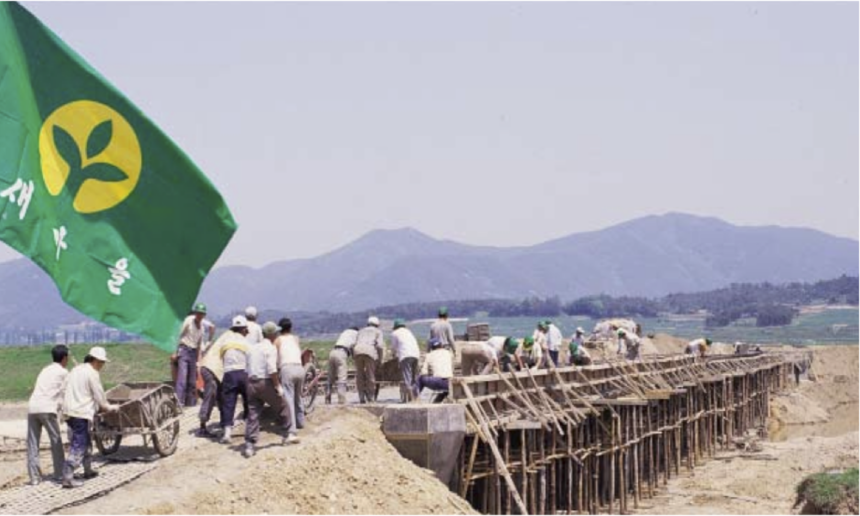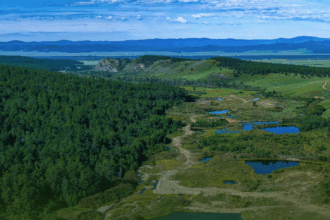The 2018 Winter Olympics will be held in South Korea’s Pyeongchang County, which is located in the mountainous region to the northeast of the country. When the 1988 Summer Olympics took place in South Korea, the country was hailed globally as the Miracle on the Han River for its flourishing development. Today, an ordinary county in South Korea is preparing to host the next Winter Olympics and completing many modern facilities to accommodate the world’s biggest winter sports tournament. This is a true miracle.
About 50 years ago, the New Community Movement (Saemaul Undong in Korean) started in Pyeongchang County. The Global Saemail Leadership Forum was held in the county last week. The forum was attended by South Korea’s President Park Geun-hye. In her remarks, President Park talked about how the sense of togetherness (encouraging the “you can do it” and “we are the one” spirit) from the New Community Movement yielded great accomplishments and transformed the way people living in rural areas think. She noted how the labor productivity and income in rural areas improved significantly as people worked together and made the best out of the timely support of construction materials from the government by building roads and bridges with collective effort.
Within 30 years, South Korea transformed itself from a poor country that asked others for financial support to one of the ten most highly developed countries in the world. Today, they are offering help to other nations rather than asking for help themselves.
BENCHMARK MODEL FOR RURAL DEVELOPMENT

The United Nations Development Fund and the Organization for Economic Cooperation and Development have acknowledged the New Community Movement as the benchmark model for rural development. The movement has been initiated in a total of 396 villages in 52 different countries today and has been reducing poverty, leveraging the practical knowledge of community members.
South Korea is creating a new way of providing substantial support in aiding the development of communities and improving livelihoods by changing the way they provide assistance internationally. In cooperation with central and local governments, the Korea International Cooperation Agency (KOICA) is providing material support to communities, organizing on-site training for Koreans, and helping them implement projects in order to promote the New Community Movement and encourage the “you can do it” and “we are the one” spirit.
President Park Chung-hee started the New Community Movement in 1972, which transformed rural life and laid the foundation for the flourishing development that would come. His daughter, current President Park Geun-hye, has picked it up again and is working hard to promote the movement globally and help the 1.3 billion people living in poverty today.
In 1972, the Korean government gathered all provincial governors and heads of local government in Seoul and held the first-ever forum on the New Community Movement. Following the forum, then President Park called on the country to initiate the movement nationwide and provided 335 sacks of cement to every village. The villagers – as a community – decided what they would do with the cement and established a committee appointing female and male leaders. The Korean government has always provided support to villages in developing infrastructure and housing.
South Korea has seen a real change in the mindsets of people as communities changed their attitudes for the better, after seeing what they could achieve with concerted effort. Over time, interest groups – such as youth clubs – were established under New Community Movement committees, which brought positive changes to interactions between people. Most importantly, everyone felt that the movement was endorsed by the government and produced good outcomes.
Eventually, they moved to a system where 20 percent of funding for projects came from community members, 30 percent from the government, and the rest was granted by credit unions.
The development committees of the villages constantly reminded people that everyone had a part to play and an obligation to fulfill (since loans from credit unions were shared), and established a good work ethic. The government supported the communities through local governments by providing technical advice and organizing training.
MONGOLIA’S NEW COMMUNITY MOVEMENT
A woman named Marina Kuykel first introduced the New Community Movement to Mongolia over ten years ago. Today, the movement has 22 branches and 9,000 members. During the forum held in Pyeongchang last week, it was announced that an international NGO named Saemaul Undong Global League was created. The Global League has national New Community Movement centers in 20 countries as permanent members and 12 centers as deputy members. The national center of South Korea was selected as head of Global League, the Ugandan center is deputy head representing Africa, and the Mongolian center is deputy head representing Asia.
If countries study the history of the New Community Movement thoroughly and if community members find suitable ways to adapt the system to their local conditions by working together, there is a real opportunity to improve rural livelihoods quickly. Ideas about how the movement can be implemented can be read in my columns titled “New Community Movement” and “Community Development and Youth Involvement” at jargaldefacto.com .
The core of Mongolia’s rural development are bags. Soums and aimags (provinces) are the bridge that connects local communities to the government. Therefore, soums and aimags need to be more proactive in supporting initiatives that come from people and in providing assistance in implementing projects.
Mongolia has a vast countryside. The territorial area of one soum can equal that of a single South Korean province. Our herders roam around the country looking for better pasture throughout the year. If Mongolian herder families work together and implement the New Community Movement, we can improve livelihoods and income levels.
Learning from South Korea’s New Community Movement and implementing it in a suitable way will offer leverage to bring about development in rural areas quickly. It would be far more efficient if herder families worked together in activities such as building houses, digging wells, protecting pasture, and collecting hay.
If our bags develop the countryside and improve living conditions, the migration from rural areas to urban settlements would decrease. We should learn from this classic policy to develop the countryside and implement it in our country in our own way.
Pyeongchang – Seoul – Ulaanbaatar, 2016.10.26
Trans. by B.Amar












